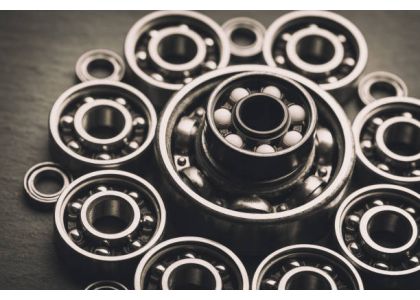INDUSTRY NEWS
Reshaping the Bearing Industry: Latest Trends and Innovations

Introduction
The bearing industry, a critical component of modern machinery, continues to evolve rapidly with the integration of advanced technologies, innovative materials, and enhanced manufacturing processes. In this article, we will explore the latest trends and innovations that are reshaping the bearing industry.
1. Industry 4.0 and Smart Manufacturing
The advent of Industry 4.0 and the concept of smart manufacturing has propelled the bearing industry towards unprecedented levels of automation, connectivity, and data-driven decision-making. Smart factories equipped with advanced sensors, Internet of Things (IoT) devices, and artificial intelligence (AI) are enhancing the overall efficiency, productivity, and quality control in bearing manufacturing.
2. Adoption of Advanced Materials
In recent years, there has been a significant shift towards the adoption of advanced materials in bearing manufacturing. For instance, lightweight and corrosion-resistant materials like composites, ceramics, and thermoplastics are increasingly replacing traditional steel bearings. These materials offer improved performance, reduced friction, increased durability, and better resistance to extreme operating conditions.
3. Customization and 3D Printing
With the advent of 3D printing technology, manufacturers are now able to produce highly customized bearings with complex geometries and enhanced performance characteristics. This advancement allows for rapid prototyping, reduced lead times, and the ability to tailor bearings to specific customer requirements, resulting in improved efficiency, precision, and customer satisfaction.
4. Condition Monitoring and Predictive Maintenance
Condition monitoring techniques, coupled with predictive maintenance systems, are revolutionizing the bearing industry. Integrated sensors, data analytics, and AI algorithms enable real-time monitoring of bearing health and performance. This proactive approach helps identify potential faults, schedule maintenance activities, and minimize costly unplanned downtime, improving overall productivity and cost-effectiveness.
5. Green Initiatives and Sustainability
In response to growing environmental concerns, the bearing industry is actively pursuing sustainable manufacturing practices. Manufacturers are investing in energy-efficient production methods, recycling programs, and the development of eco-friendly lubricants. Furthermore, bearing designs are being optimized for reduced friction, resulting in energy savings, and reduced carbon emissions throughout the lifecycle of the machinery.
6. Collaborations and Partnerships
Collaborations and partnerships between bearing manufacturers, research institutions, and industry stakeholders are fostering innovation and driving the industry forward. These strategic alliances facilitate the exchange of knowledge, expertise, and resources, leading to the development of novel bearing designs, manufacturing processes, and application-specific solutions.
Conclusion
The bearing industry is undergoing a remarkable transformation, driven by technological advancements, materials innovation, and a focus on sustainability. From smart manufacturing and advanced materials to 3D printing and predictive maintenance, the industry is embracing these latest trends and innovations. As a result, we can expect increased efficiency, reliability, and sustainability in the machinery and equipment utilizing these bearings, which will ultimately benefit various sectors such as automotive, aerospace, energy, and industrial manufacturing.